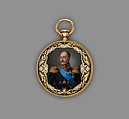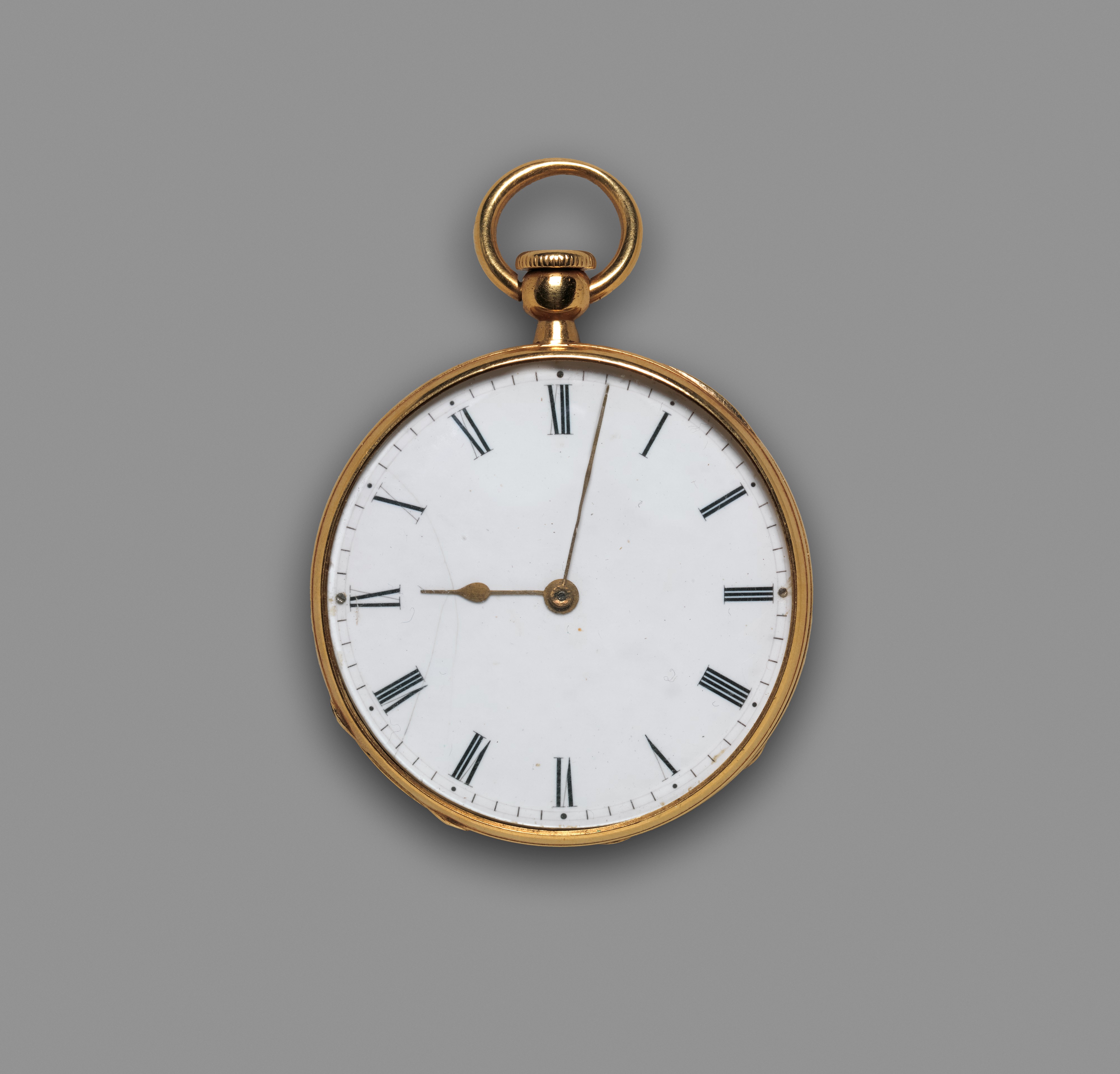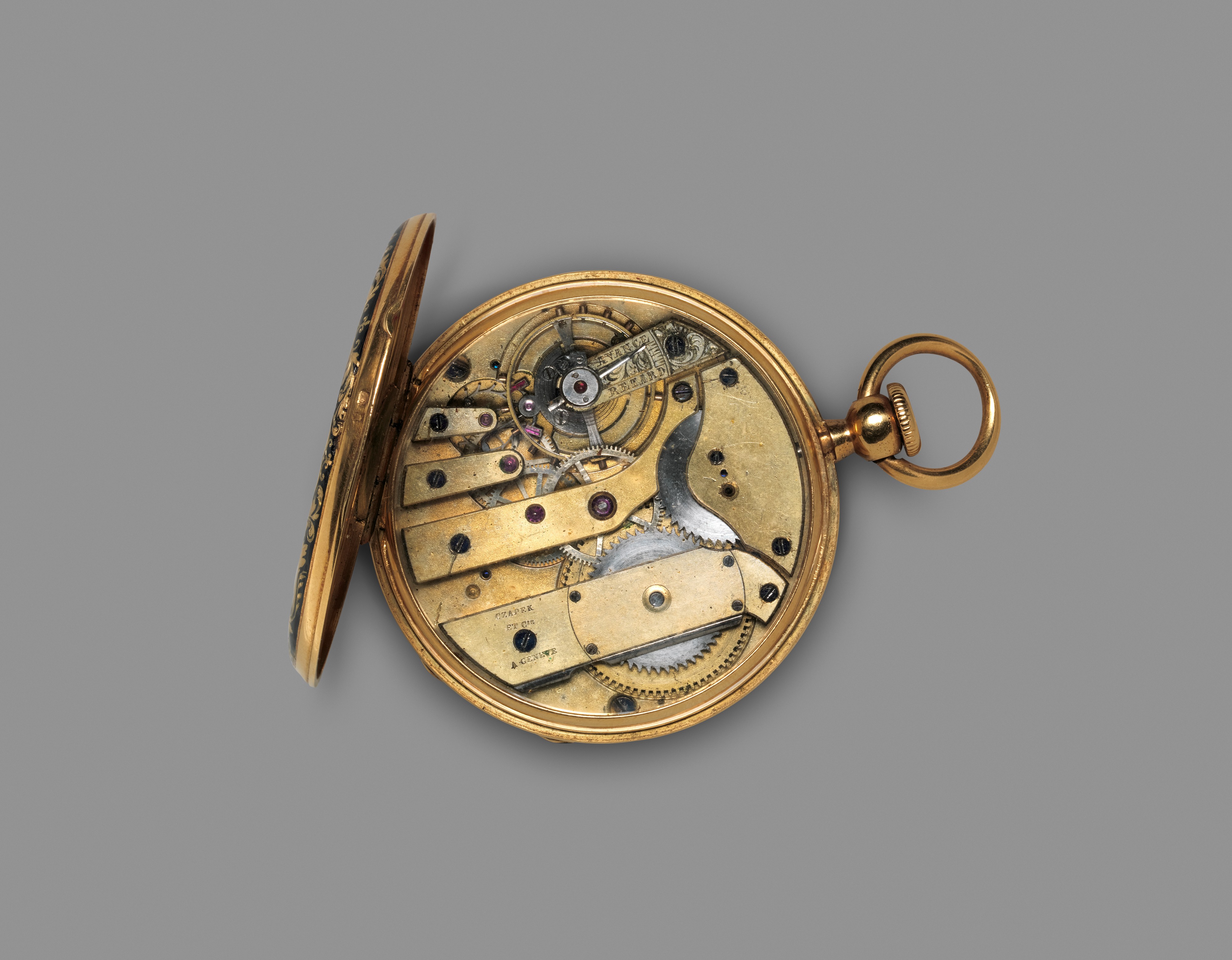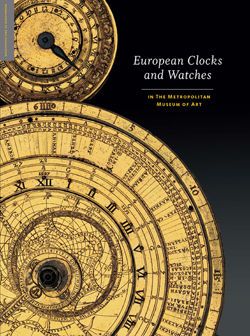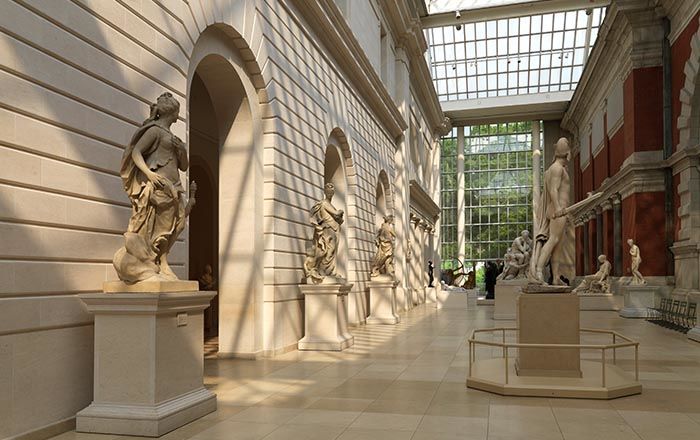Pocket chronometer
Watchmaker: François Czapek Bohemian
Watches with portraits painted on their cases have a history that is almost as long as watches with painted enamel cases of any kind. One with portraits of the French King Louis XIII (1601–1643) and his minister, Cardinal Richelieu (1585–1642), inside the front and back covers has been attributed to Henri Toutin (1614–1684)[1] and confidently dated to about 1640.[2] The Metropolitan Museum has an exquisitely enameled gold watchcase that contains a portrait of Louis Hesselin (1602–1662), appointed surintendant des plaisirs du roy (organizer of entertainments) to King Louis XIV (1638–1715), painted about 1645 inside the bottom of the case.[3] A second watch, in the Robert Lehman Collection at the Metropolitan, has an even more exquisitely enameled case that depicts King Louis XIV as a boy astride a rearing horse, painted about 1645–48.[4] All three watchcases may have been made in Paris or Blois, but more likely Paris. By the 1660s the locus of fine enameled portrait painting had moved to Geneva, where the enamels of Jean I Petitot (1607–1691) and Paul Prieur (1620–1684) set a remarkably high standard. Later in the century others, including Jean-Pierre Huaud (1655–1723), with his rare but penetrating portraits [5] continued the tradition (see 17.19.1522 in this volume).
It has usually been assumed that the watches with portraits of kings and those of high status in their courts were given as rewards for loyalty or service. This was not invariably the case, however, for the watch with Hesselin’s likeness, for example, is known to have been in his own possession at the time of his death.[6] Still, it is probable that most such timepieces were, indeed, more commonly commissioned as tokens of princely, royal, or imperial favor. This watch in the Museum’s collection with a portrait of Czar Nicholas I of Russia (1796–1855) on the back of the case surely belongs to the tradition of gifts or awards. Providing additional evidence, at least one other with the identical portrait survives most probably in Russia.[7]
The half-length portrait of the czar depicts a man in military uniform with a blue sash and gold epaulets. The upper part of the Imperial Russian arms is visible below, lest there be any doubt about his identity. The portrait is made of enamel painted on gold within a frame of leafy scrolls chiseled in low relief partly filled with enamel and contrasted with a black enamel ground. Like the portrait, the frame has a coating of colorless transparent enamel that adds to the brilliance of both portrait and frame. The technique, perfected about 1780 by Geneva enamelers,[8] was widely used throughout the nineteenth century, owing to the protection it gave to the delicate surfaces of painted enamels.
The white enamel dial of the watch has a cover of glass in a plain gold bezel. The dial has unusually slim roman numerals (I–XII) for the hours and strokes for the minutes, each five-minute interval indicated by a dot. The gold hour hand with a spade-shaped ending and a subtly shaped gold minute hand complete the spare but elegant design. The back cover opens on a hinge at the four-five o’clock position, and it is signed on the interior side “Czapek & Cie / A GENÈVE,” numbered 2478, and labeled cronometre de poche (pocket chronometer). A pocket chronometer, a different timekeeper from a marine chronometer,[9] is a very accurate pocket watch with a variety of lever escapement [10] and temperature compensation.
When the back cover of the watch is opened, the jeweled movement is seen to be covered not with a dust cover or a dome but with glass. As seen through the glass, the movement has a Lépine-type,[11] single full plate and bridges for securing the going barrel (on the right) and the three wheels of the train. A bridge on the left of the train is screwed to the plate and secures the escape wheel of the lever escapement. On the upper left is another bridge marked “AVANCE / RETARD” and calibrated for the regulation of the temperature-compensated balance and flat spiral hairspring. The large bridge on the right of the train is marked “CZAPEK & CIE / A GENÈVE.” At the top, a bridge screwed at both ends to the full plate secures a wheel that engages with a second wheel, which is mounted on the arbor of the going barrel. These two wheels are part of the mechanism for winding the mainspring of the watch, which is manipulated by the flat disk on top of the pendant instead of by a key.
The principle of the mechanism was used by several watchmakers in the late eighteenth and early nineteenth centuries,[12] but the version used in this watch was the invention of Frenchman Jean-Adrien Philippe (1815–1894) in 1842.[13] His invention was seen by Count Norbert-Antoine de Patek (1812–1877) in the Paris Exposition Universelle of 1844, where Patek, a Polish-exile-turned-watch-seller in Geneva, offered Philippe a position as technical director in his Geneva firm to begin in 1848, as soon as Patek’s contract with Czapek expired. Thereafter, Czapek, a Bohemian-born watchmaker of Polish descent and Patek’s partner in 1836–48, began his own company. The new company specialized in souvenir and portrait watches, including watches with patriotic or religious themes.[14] In 1854, Czapek opened a shop in Warsaw, and in 1860, another in the Place Vendôme, Paris, the latter catering not only to Polish émigrés but also to the imperial court of Napoleon III (1808–1873). Czapek and Company was liquidated in 1869, and it is said that Czapek died in poverty.[15] Patek Philippe, however, founded by Patek, Philippe, and their financial partner, Vincent Gostrowski, still flourishes in Geneva to this day.
The enamelists who supplied portraits for Czapek apparently remain unknown, as do the watchcase makers. The keyless, or stem-winding, mechanism in the Museum’s watch, which was Philippe’s invention, is the earliest practical keyless watch to have been produced in quantity.
Except for a hairline crack in the enameled dial that appears between the seven and eight o’clock positions and runs to the ten o’clock position, slight scratches all over the portrait, damage at the eleven o’clock position, and a screw missing from the bridge that secures the top winding wheel, the watch is in excellent condition.
Vladimir Eitingon, who bequeathed the watch to the Museum, lived in New York at the time of his death in 1982.
Notes (For key to shortened references see bibliography in Vincent and Leopold, European Clocks and Watches in the Metropolitan Museum of Art. NY: The Metropolitan Museum of Art, 2015)
[1] Now in the Victoria and Albert Museum, London, inv. no. 7543-1861. See T. P. C. Cuss 1967, p. 25, pl. 18; Cardinal 1989, pp. 152–53, ill. no. 116.
[2] See entries 12 and 20 in this volume for more about these early enamels.
[3] Acc. no. 17.190.1413. See Leopold and Vincent 1993.
[4] Acc. no. 1975.1.1244. See Vincent 2012, pp. 78–83, no. 21.
[5] See entry 26 in this volume.
[6] See Leopold and Vincent 1993, p. 103.
[7] The watch is illustrated in Maziarkin and Iudkevich 2011, p. 48.
[8] Cardinal 1989, pp. 196–201; see also Clutton and Daniels 1979, p. 76, in which the invention is dated to 1760.
[9] For more about marine chronometers, see Randall 1992, especially pp. 33–35. See also Sobel and Andrewes 1998, pp. 187–95.
[10] For a more detailed discussion of lever escapements, see Clutton and Daniels 1979, pp. 119–29.
[11] See entry 51 in this volume.
[12] For an earlier variety invented by John Roger Arnold about 1821, see Clutton and Daniels 1979, figs. 253a–c; another, invented by Abraham-Louis Breguet, appears in figs. 265a–c. Others were by Louis Audemars & Sons (possibly as early as 1838) and Antoine Lecoultre (1847); Clutton and Daniels 1979, p. 76. See also Huber and Banbery 1982, pp. 40–48.
[13] For the Philippe system, see Huber and Banbery 1982, pp. 49–52.
[14] Ibid., p. 16. See also Pritchard 1997, vol. 1, p. c-107, and vol. 2, pp. p-10, p-11; Patrizzi 1998, p. 147; Timepieces for Royalty 2005, pp. 13–15.
[15] Timepieces for Royalty 2005, p. 15; a brief biography of Czapek also appears on pp. 14–15.
This image cannot be enlarged, viewed at full screen, or downloaded.
This artwork is meant to be viewed from right to left. Scroll left to view more.
